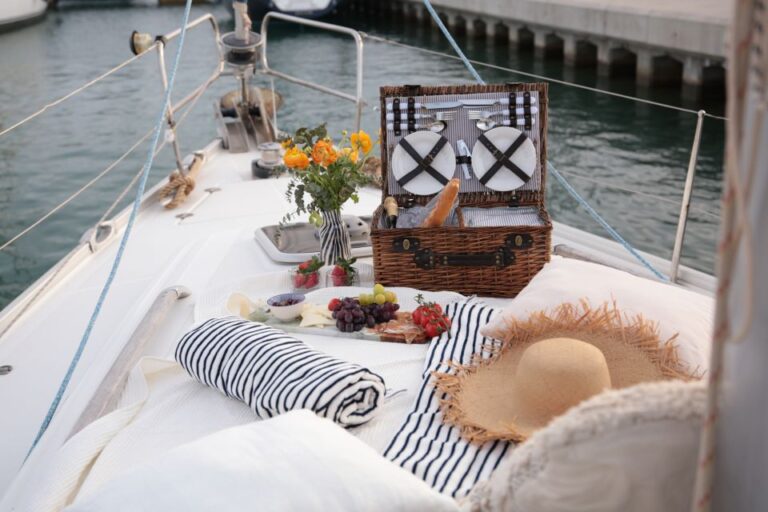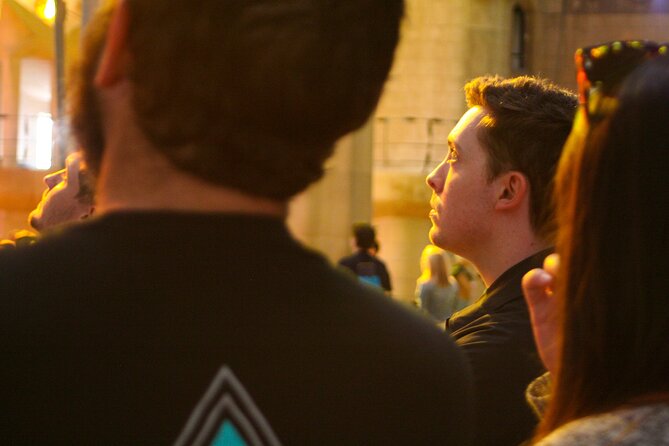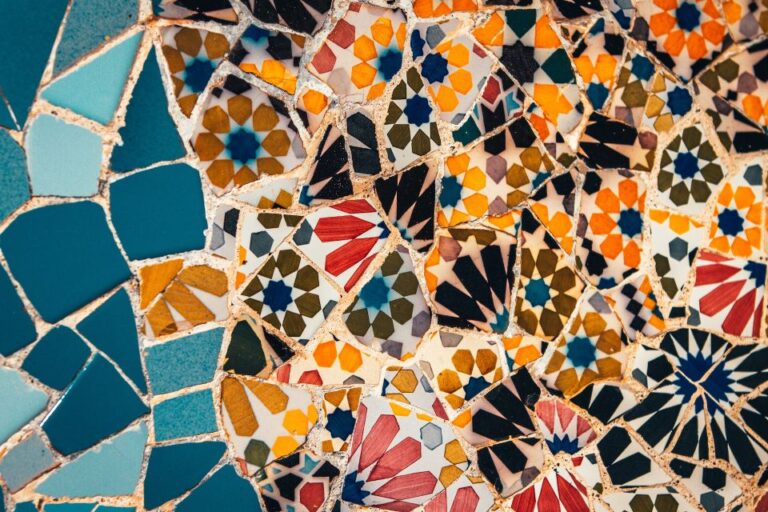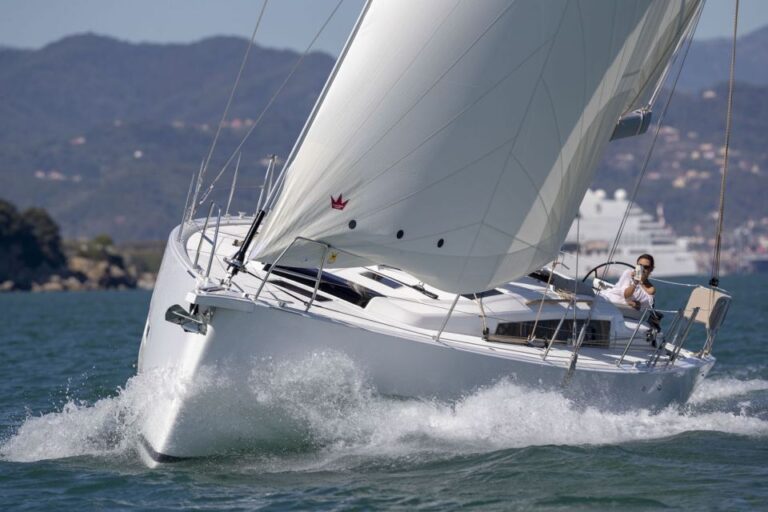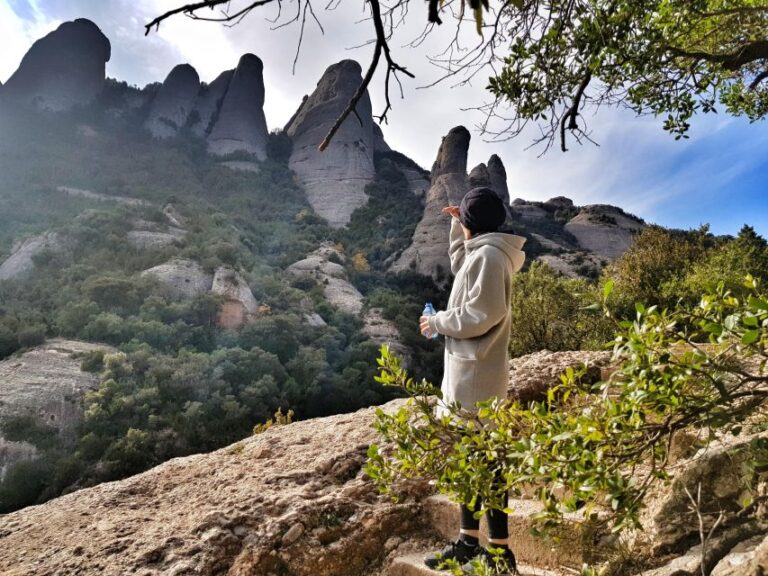If you’re interested in seeing inside one of Europe’s grand opera houses, consider visiting Barcelona’s Gran Teatre del Liceu. Reportedly one of the continent’s largest, the Liceu is situated midway along the city’s busy La Rambla.
History and Ownership
The Liceu was founded in 1847 by the former Sociedad Dramática de Aficionados (Society of Theatre-Lovers) and funded by the sale of private shares to wealthy patrons, the former Societat de Proprietaries (Society of Owners). Now publicly owned and managed by the Fundació del Gran Teatre del Liceu (Foundation of the Grand Liceu Theater), the theatre continues its role as a center of culture and performing arts, presenting performances of ballet, music, and opera. It is also open to the public for tours.
Exterior and Interior
The building’s modest exterior, sometimes easy to miss unless you notice the line of people waiting at the entrance, features an arcaded walkway topped by rows of decorative arched windows and a rooftop clock.
In contrast, the interior, beautifully restored following a bombing by anarchists in 1893 and several fires (most recently in 1994), is a spectacular mix of Neoclassical and Renaissance styles. Here’s what you’ll see:
El Vestíbul (The Vestibule)
This opulently decorated main lobby, original to the 19th-century structure, features:
- An intricately designed skylight
- Painted ceilings
- A central staircase (escala principal) of white marble, flanked by Corinthian columns and gilded candelabra
- ‘La Musa de la Música’ (the Muse of Music) sculpture by local artist Venanci Vallmitjana, standing at the top of the landing since 1901
- A cut-away model of the theatre on display
Sala principal (Main Hall)
This impressive classic red and gold, horseshoe-shaped auditorium, modeled after the Teatro alla Scala in Milan, Italy, was completely reconstructed and expanded following the fire of 1994. The Hall features:
- Five tiers of seats and boxes (llotges)
- Several painted ceiling medallions, some of which serve as access panels for stage lighting
Saló dels Miralls (Hall of Mirrors)
Spared from complete destruction in the recent fire, this beautifully restored room, previously known as El Vergel (The Garden), serves as a public meeting area during performances. It is decorated with:
- Sparkling chandeliers
- Ceiling paintings depicting Apollo and the muses (reproductions of the originals)
- Corinthian columns
- Gilded reliefs
- Medallion paintings of composers and performers, such as German composer Christoph Gluck, tenor Giovanni Rubini, and French actor and playwright Molière
- Phrases relating to art and music along the upper walls, such as “El arte no tiene patria” (art has no country)
Llotges (Boxes)
Formerly private boxes or loges, belonging to the members of the Society of Owners, can be seen surrounding the Hall. The entrances to the boxes, much smaller than their predecessors, are simply decorated. However, in the heyday of the Liceu Theater, many wealthy patrons/owners outfitted these private rooms with the finest furnishings and décor often found in the grandest of homes.
The most elegant llotges are the proscenium boxes located closest to the stage. These elaborately decorated boxes feature gilded Corinthian columns and reliefs.
The Foyer
This multi-purpose space, located below the Main Hall, is used as a concession area and venue for small-scale concerts, performances, and other social or business events.
Cercle del Liceu
Founded in 1847, this private club, some of whose members were owners of the adjoining Liceu Theater, features Catalan Modernist interior design and decorative works of art, as well as an impressive collection of original paintings. Among these are:
- Fatigada! (Tired) – Francesc Masriera, 1894
- Automòbil (Car) – Ramon Casas, 1901-1902
- Cos de ball (Corps de Ballet) – Ramon Casas, 1901-1902
- La Sargantain – Ramon Casas, 1907
Getting There and Ticket Info
Gran Teatre del Liceu is located at La Rambla, 51-59. The theater offers several tour options:
- 50-minute tour (€16.00): Includes Vestíbul, Sala principal, Saló dels Miralls, Foyer, and Cercle del Liceu
- 45-minute tour (€9.00): Includes Vestíbul, Sala principal, Saló dels Miralls, and Foyer
- 30-minute tour (€6.00): Includes Vestíbul, Sala principal, Saló dels Miralls, and Foyer
- Backstage-Only tour (€24.00): Includes dressing rooms, rehearsal rooms, wardrobe, and make-up departments
The theater offers a variety of discount options; visit their website for more information.
Note: Due to performance/event schedules, some of the rooms included in the various tour options may not be accessible on the day of your visit. Check the tour calendar for updates or inquire at the ticket counter.
Additional Information
- The Liceu has a seating capacity of 2,292, making it one of the largest opera houses in Europe.
- The theatre has hosted performances by many renowned artists, including Plácido Domingo, Montserrat Caballé, and José Carreras.
- In 1893, an anarchist threw two bombs into the theatre during a performance, resulting in 20 deaths and numerous injuries.
- The 1994 fire, which began on the stage during routine maintenance work, destroyed much of the theatre’s interior. It took five years to rebuild and restore the Liceu to its former glory.
- The Liceu’s facade is relatively simple compared to other grand opera houses, as it was originally built between existing buildings on La Rambla.
A visit to the Gran Teatre del Liceu offers a fascinating glimpse into Barcelona’s rich cultural history and the world of opera. Whether you take a guided tour or attend a performance, you’ll be captivated by the theatre’s stunning architecture, opulent decor, and enduring legacy as a hub of the performing arts in the heart of the city.

